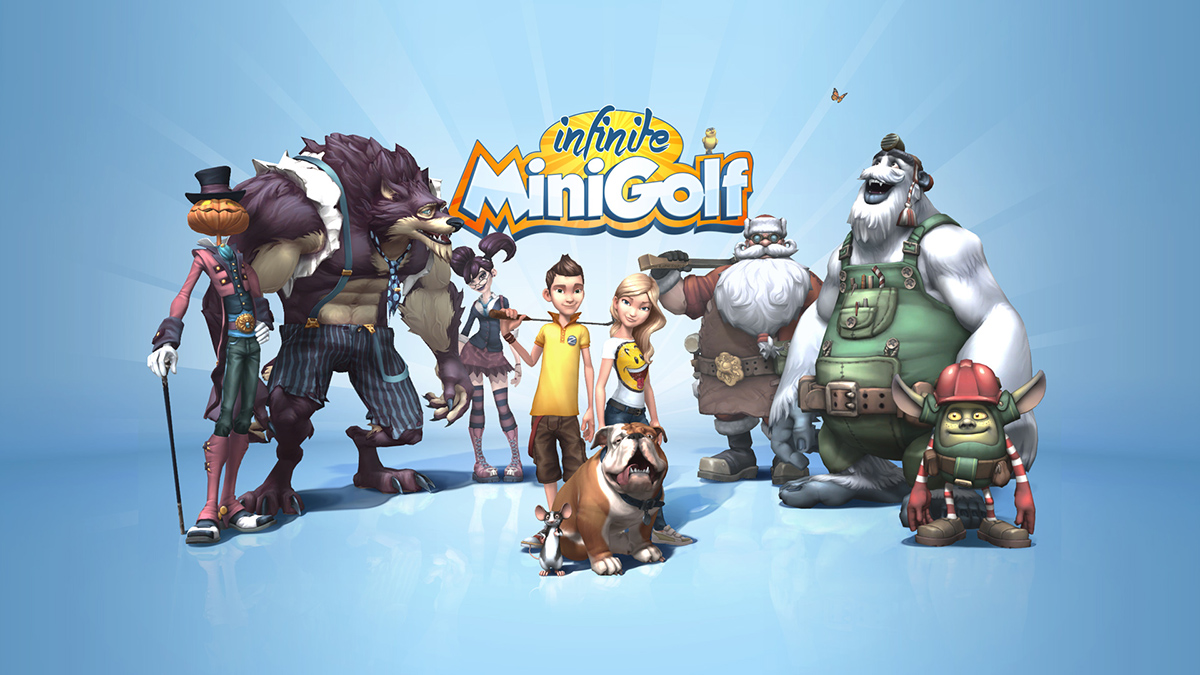This is not miniature golf.
I struggled to determine exactly what I was playing, but I’m fairly certain that trying to put in my usual golf game skills into Zen Studios’ Infinite Minigolf wasn’t working. No, my amazing Wii Sports golf swings weren’t translating (no motion controls) and my PGA Tour accuracy was actually too technical for IG, and so I was left scratching my head for a bit as I determined what way to take on the experience. I wan’t having fun, feeling like the game was missing the mark as to what I expect out of the genre.

This isn’t golf. Nope. Zen Studios make pinball games.
And then it hit me. This isn’t golf, this is pinball on a golf course.
A facepalm later and Infinite Golf actually feels pretty good.
Approaching the game with that understanding will go a long way towards setting expectations for the experience. The most important evidence for this is in the game’s controls. In most modern golf games we adjust our golfers, rotating our position and setting strength & direction by pulling back on a stick and then pushing forward, imitating a proper swing and angle for realism. In IG, we instead control the ball, pointing it in a direction and pulling back the stick for power. We don’t push forward on the stick, we just let go, like releasing the plunger in [insert your favorite pinball machine here].

There’s some strange hypersensitivity in the controls, in that even slight taps can swing the angle around too much or inadvertently execute far too powerful of a swing, so it takes a little getting used to. The camera can also leave us in weird views where we can’t see the hole properly or the play field far in front of us. Apart from that, however, it’s fairly simple to take shots. It’s kind of a golf game for people who aren’t used to executing the technical aspects of golf.
The mini golf side of the game is presented in course “worlds,” which range from a kid’s bedroom to a nightmare realm to Santa’s workshop. These can feature drones airlifting balls across a room, speed traps and magnets, and even super boosts that players can collect and utilize. Each of these worlds has several courses and mini-tournaments within, along with varying levels of difficulty and a course editor to give us enough to do. The game moves fast, and only takes about 5 minutes or so to plow through a 9-hole tournament, so the editor and ability to download and share courses is a nice addition, especially considering that the courses are compatible across all versions of the game (create one on Switch and someone on the PS4 can download it, and vice versa). Creating holes takes place completely with a controller, to stay in line with the other versions of the game, so any thought of using the Switch’s touch screen for a better user interface go out the window, unfortunately.
Really, the only thing holding the game back is the presentation. Because it’s ramming a pinball backbone into a human-sized sport, it comes off stiff and robotic, like we’re sliding around on a table instead of a multi-level hole. Everything looks like it’s designed at 90-degrees, either upright or flat on the floor. Perhaps a more dynamic camera, or at least one that lets us move around more fluidly, would be a benefit to giving life to the cardboard designs.
Infinite Minigolf is fine. It’s pinball, not golf, so I can appreciate what it’s trying to accomplish. It’s the sequel to the cult favorite PS3 game Planet Minigolf, carrying over some of that charm and creativity. Some issues aside, it’s a fast enough game with enough things to do that I can get through a quick and enjoyable session before it gets repetitive.
This review is based on a Switch eShop code sent to SideQuesting by the publisher.



No Comments